My first experience as a speaker and attendee at the INBOUND18 conference was great. I was taken aback by all the glitz and glamour of such a large show. The lineup of keynotes and spotlight speakers was exciting with names like Beth Comstock, Shonda Rhimes, Reid Hoffman, Deepak Chopra, 2DopeQueens, and A-Rod (no J-Lo did not make a surprise appearance).
With over 25,000 attendees, it’s no surprise that “Take heed and don’t stampede” was plastered at every large session in the main hall. The show kicked off late Tuesday afternoon, which I thought was a bit strange as I had arrived the night before thinking it would begin in the morning. (I clearly didn’t check the agenda before I booked).
The interesting thing about the show was that it really gathers all sorts of people that are bound by a common thread: Hubspot. I would venture to say that roughly 85% of attendees (if not more) use Hubspot at their organizations. And although you are gathering such a large group, there’s also a culture and commonality that you feel.
The biggest problem with inbound was the difficulty in networking. Such a large group of people makes it difficult to make meaningful connections with people that can add value to your network. I think of course that’s a personal thing that I and a few friends at the show dealt with because we don’t do well in large crowds. You most certainly can find connections, but if you’re a bit of an introvert I suppose it would be too difficult.
That being said, I had a good time and attended a number of sessions and events. Here are my takeaways:
The Opening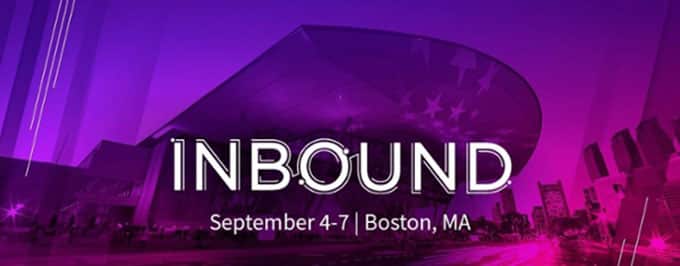
The host of the show was Mark Jeffries who was very light-hearted and gave advice to speakers on what to do to make sure the audience doesn’t fall asleep during your talk. He claimed that 80% of the audience becomes bored with your content within minutes and their brains will begin to wander. He suggested taking long pauses during your talk so that those whose brains wandered off think it’s done (so they wake up) or other people think that the speaker forgot something and pay attention to catch the next big blooper.
Or he said a speaker should say certain words with a higher pitch to catch people off guard and get them back.
Finally, he closed with beware of a cough. The more people start coughing the more they’ve lost interest. All in all, Jeffries got a good job getting the audience going.
The first opening keynote was by Deepak Chopra who is a well-known author of over 80 books, and the founder of the Chopra organization. He is a brilliant man but was a bit monotone. His topic was also intense, but I could see how much lost interest (according to a lot of tweets I read).
He first opened his talk with how we came to this conference and took us literally to the moment of conception to birth.
But he stressed the importance of well-being and the impact of that on one’s life. He mentioned how although some genes are predetermined, other genetic diseases are directly related to poor health and life choices.
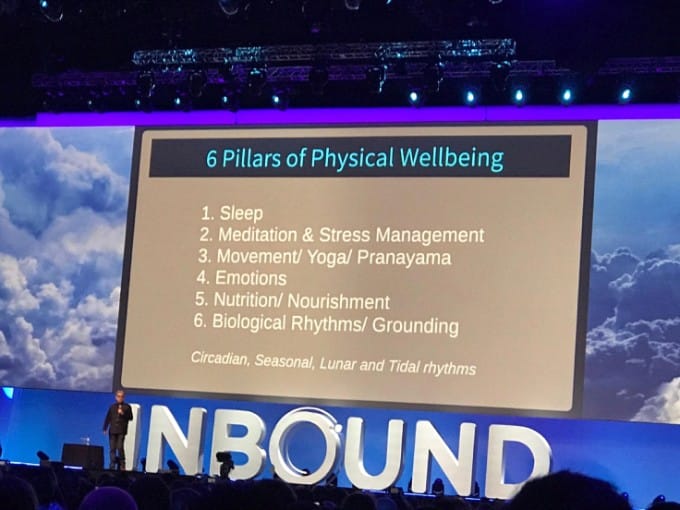
Some Key Takeaways:
- Physical well being isn’t enough. Well-being needs to be approached in a holistic manner: physical and spiritual and social and community and financial well being
- Spiritual intelligence important as emotional and intellectual intelligence.
- Happiness in your job is critical to your well-being. Only 20% engaged in the workplace. This is equivalent to 300 billion in lost revenue from companies annually in the USA. More ppl die at 9 am Monday morning.
- Social and emotional engagement Happy friends = your happiness. More and more data on happiness. Happiness improves immune regulation. Depression puts you at greater risk of disease.
The next day, I missed the opening keynote by Beth Comstock, Former Vice Chair at GE because of client meetings and work with the team. The breakout sessions took place from 10:30 – 5 and there would be a closing keynote. Each session was about 45 minutes long.
I attended a talk by Bill Cates, a business growth expert and inductee to the Million Dollar Speaker’s Group, on Sharpening Your Value Proposition.
As we know we are exposed to thousands of marketing messages a day. So in order to cut through the noise, your value proposition needs to be:
- Relevant
- Right product right market right message right medium
- To compete on value fully know our value
- Message value properly
- Creating action through clarity
Then I attended a talk about the neuroscience of engagement by Carmen Simon a Cognitive Neuroscientist. I’m fascinated by this because it has so much to do with our work.
She talked about how people get bored with the same old thing. In order to reduce boredom and “engage” visitors, implement these 3 things:
- Variety and Changing stimuli. The more you vary, the more the brain stays “engaged.” This is because the brains habituate very fast so it stops paying attention to changes. How do we apply this online? Well, we need to constantly be providing various changes meant to engage and keep the visitor’s attention.
Think about the last time you watched a long movie. In general, the stimulus has to change every 2 – 3 seconds, whereas movies in the 30s and 40s, the stimulus was likely to change very 10s!
Interestingly, in Norway, they did an experiment of “slow tv” where they displayed 12-hour wood burning or 6 hours of a train ride. The reason people were engaged was the “anticipation” of something happening.
I recall at the conversion conference a similar situation where people watched for hours while they would place rubber bands around a watermelon waiting for it to “explode.”
- Don’t feel you have to simplify but rather rhythm between simple and complex. Dumbing down doesn’t always make sense, but make sure you explain and include your complexity.
- Less is not always more. We used to rave about having more whitespace, however, now increasingly that causes more FUDs.
- Add a creative dimension to whatever you create for your end user.
The end of the full day one was with the founders of Hubspot: Brian Halligan and Dharmesh Shah, each giving their own presentations.
Brian focused on replacing the funnel with a flywheel just as Jeff Bezos described his process.
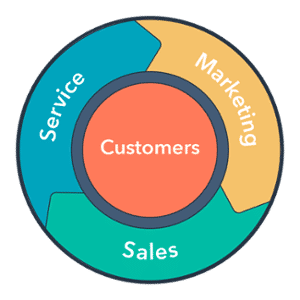
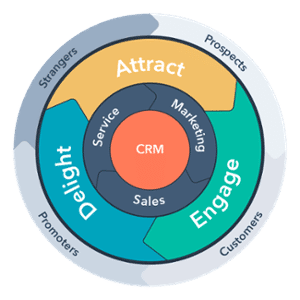
Dharmesh Emphasized the importance of experience over anything else. Companies like Starbucks, Amazon, and his company Hubspot are about the experience.
And the way to get to this experiences was:
- Owning screwups: a good example is when KFC ran out of chicken
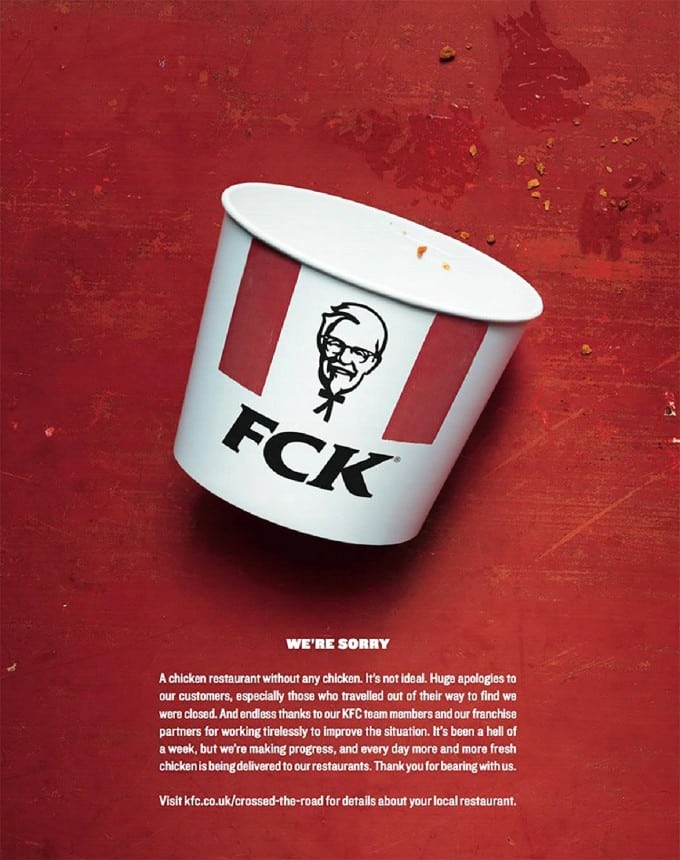
- Be open and non-manipulative. He mentioned the example of Blockbuster’s hidden fees and how that had a direct impact on the fall of that business.
- Don’t block the exit: Meaning make it easy for people to cancel.

One of the highlights of the conference was Shonda Rhimes, the founder of Shondaland production company and the producer and writer behind some of the most successful primetime American shows of all times like Grey’s Anatomy, Scandal, and How to Get Away with Murder.
You may say that someone like Shonda is not a marketer, however, her success as an African American women is something to be admired and to learn from.
She learned to be clear about what she wants and definitive in order to accomplish her goals. And she learned to say Yes and own deservingly all the awards and invites she got. She learned to champion women and be aware that her position gave her the strength to make changes and give equal opportunities.
She would never go into a negotiation she couldn’t walk away from. She always had a number and conditions that she was unwilling to walk away from.
The day started out great, and after the morning keynote broke out into several different sessions. The nice thing is that there was something for everyone at that conference.
My session was on Thursday at 1 pm Titled Secrets From the Frontlines: Tips on conversion rate optimization. It was well attended and received. There are many encouraging twitters we received, after my Inbound session.

Source: Spitfire Inbound
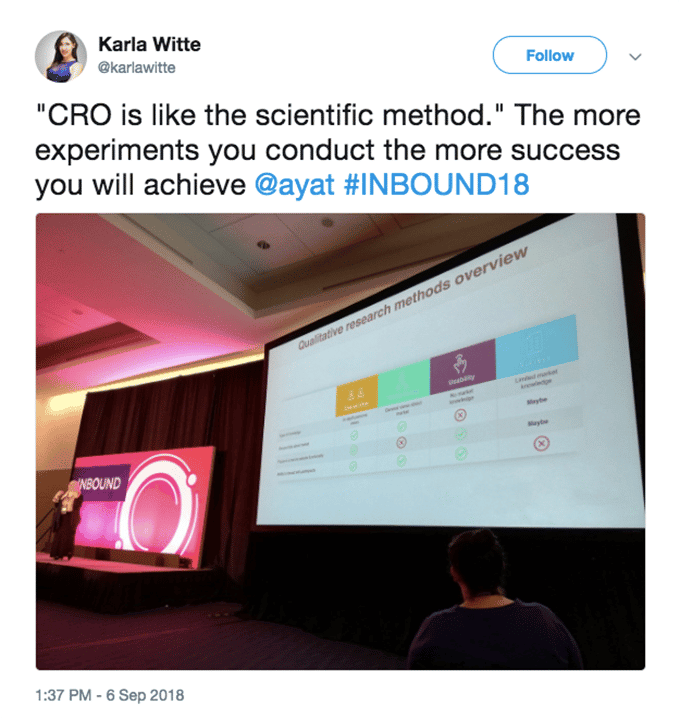
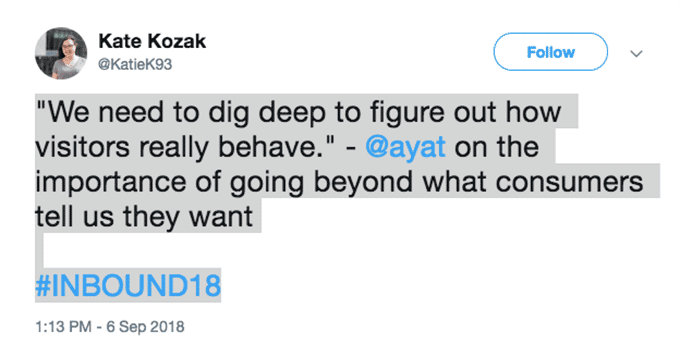
In Conclusion
The conference exposed me to a lot of other great leaders, artists, and marketers. I would recommend that everyone goes because there is a lot of learning from.




